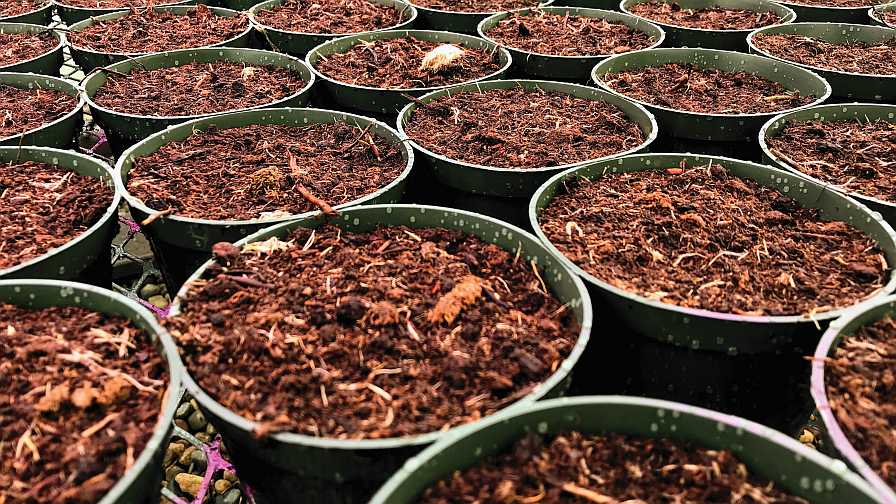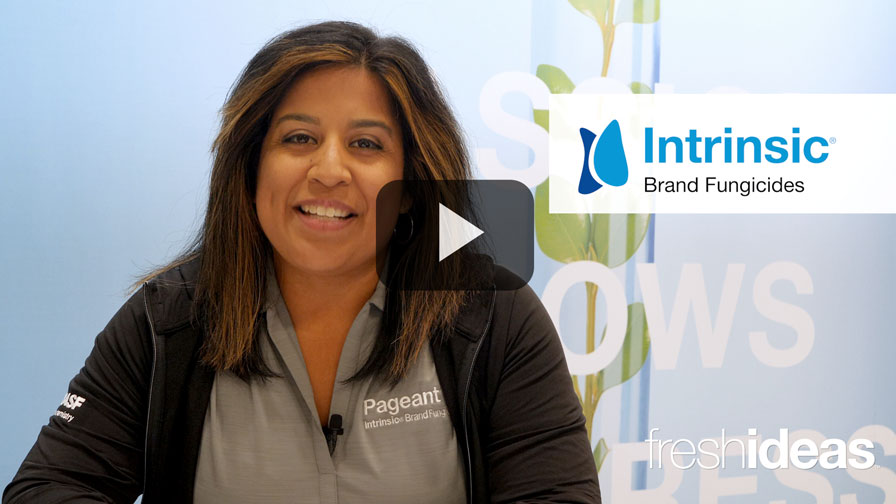What a Top 100 Greenhouse Grower Can Teach You About Switching to Wood Fiber Media

Wood fiber mix tends to run wetter than conventional mix, so you need to be aware of the volume of water you are adding to the mix. Photo: Garrett Owen, University of Kentucky
What is the one thing a grower never wants to change when trying to produce a high-quality crop? Simple – the soil. Despite that, six years ago, Dallas Johnson Greenhouses decided to do that exact thing for more than 80 acres of plant material.
There are two main reasons that influenced our decision to switch to a wood fiber media: costs and sustainability. Perlite and bark are not condensed, and shipping costs for a company of our size were significant. Using just peat and wood fiber, which are both condensed, made sense financially. We also want to become a more sustainable growing operation. The use of renewable wood fiber components is a smart decision for the future.
Three Challenges We Overcame During Transition
When we first made the switch, we did not adjust any of our lime rates or starter charge rates from the conventional media. Keeping the pounds per yard the same gave us a solid starting point. However, as part of our standard growing practice from planting to finish, we regularly test our media and water. Testing gave a good insight to what the EC and pH levels in this new media were doing over the course of the crop. Surprisingly, the EC and pH were acting the same as with a conventional mix. This gave the growing team the reassurance that we were reading the new media correctly. Even with similar EC and pH levels, we did run into a few challenges in our transition to a wood fiber mix. Among them were fill levels, watering, and fertilization.
Fill Levels. The first difference we noticed using a wood fiber mix was the fill levels of the media in the container. When using conventional media, the components are mixed, dumped on a conveyor, and leveled off into the finished container. Using a wood fiber mix required a slight tweak before hitting the final container. The new mix required a little fluffing with an attachment on our soil-filling machines. Proper fill for a wood media is actually just above the lip of the final container. The mix is light and fluffy compared to perlite/bark mixes, so adjusting brushes to not fully compact the mix was important to our success.
Watering. Another difference with wood fiber mix that required some adjustments had to do with watering. Wood fiber mix tends to run wetter than conventional mix, so we had to be aware of the volume of water we were adding to the mix. When watering with a conventional media, sometimes the idea is to water to settle the media. With wood fiber mix, you do not want to overwater and condense the air-filled mix you just created. We found getting the newly planted plug wet, plus about 20% of the surrounding media, worked well for the first few waterings. After a few weeks, when fuzzy white roots start to take hold, the wood fiber media can start to be cycled more like conventional media. Always staying slightly ahead of those new roots seems to be the best strategy for growing with this media.
Fertilization. One final thing to consider with a different watering strategy is fertilization. If you know that a media is going to stay a little bit wet, it makes sense to feed. In a conventional mix, we would tend to water in with fresh water and let the starter charge get the plant started, so you would be able to fertigate sooner. But with the new media, if we water them in properly with fertilizer, we may not have to even touch them for seven days. That initial feed is the only way to get the EC where we want it.
Practice Makes Perfect
Using a new technology can be a scary adventure, and there will likely be some tough-looking plant material while you are figuring it out, but that is why we are growers. We are trained to look at patterns of success and failures; to read plants and use the observations to adjust. We learn from our failures and the next planting; we turn them into our successes. While it can be challenging, it is important to embrace and master new technologies to leave the growing world a little bit more efficient and sustainable for the future growers.









